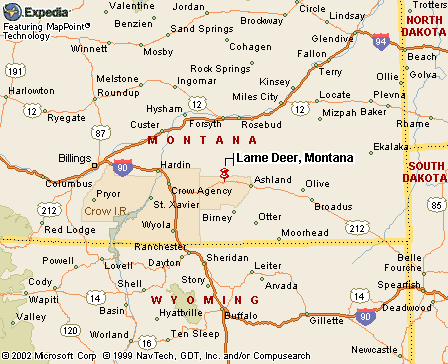|
|
Canku Ota |
|
|
(Many Paths) |
||
|
An Online Newsletter Celebrating Native America |
||
|
April 20, 2002 - Issue 59 |
||
|
|
||
|
An Ancient Tongue May Fall Silent |
||
|
by Heather May
Salt Lake Tribune
|
||
|
|
 Richard
Littlebear and others of his generation may be the last ones to joke
in the Cheyenne language. The last ones to pray in it, to use it to
heal. Richard
Littlebear and others of his generation may be the last ones to joke
in the Cheyenne language. The last ones to pray in it, to use it to
heal.
Littlebear, 61, is one of the 2,000 or so of the 5,000-member tribe who can still speak their native tongue. In just three decades, a language that has existed for centuries could disappear. And with it would vanish ways of knowing about the land and spirituality, says Littlebear, an educator who is trying to reverse the demise. "The only way [people] can express themselves culturally and individually is through their language," says Littlebear, president of the tribally controlled Chief Dull Knife College in Lame Deer, Mont. "You're hitting at the base of a person's existence and identity." Littlebear will explain what it's like to lose a language at the Salt Palace Convention Center as part of an international conference for teachers of English as a Second Language. About 7,000 educators are in Salt Lake City to find ways to better teach the language. But while they focus on English, Littlebear and others hope teachers won't forget the importance of students' home language. The sentiment flies in the face of recent movements to emphasize English. Take Utah's mostly symbolic law requiring that official government business be done in English, or the push in some states to quickly move students into English-only classrooms. But in Littlebear's school, as well as some Utah classrooms, educators are teaching students their native languages, believing that knowledge will not only help children better learn English, but also help them be more well-adjusted. For instance, a couple of schools in Salt Lake City offer bilingual elementary classes, and at least one middle school offers a Spanish class for native speakers. In the San Juan District, where the majority of students are American Indian, Navajo students must study that language in elementary school for an hour and a half a every day. Junior high and high school students who aren't proficient in English must take Navajo classes along with English. Through the district's 5-year-old "heritage language program," students learn their language and culture is an asset. "You become proud of who you are," says Clayton Long, bilingual program director for the San Juan District. "English is also important. One is not more important than the other." Littlebear didn't know that as a youngster attending a government-run school. There, he was banned from speaking Cheyenne. He majored in English as an undergraduate "under the mistaken notion it was superior. That was ground into me while going to school at the reservation. Preachers, teachers, merchants -- they spoke English and were obviously people of power." Today, Littlebear is of a different mind. Though he doesn't want to bash English, he has written that English is "a voracious language . . . that gobbles up everything in its way." It wasn't until he was 40 that Littlebear learned to read and write Cheyenne. Now he's promoting those skills, hosting a language immersion program every summer for kids, and a Cheyenne language and culture program for teachers. "My vision is that Cheyenne will be spoken forever," he says, noting he must act quickly. Most of the current speakers are 35 and older. He estimates the language could be lost by 2036. Oddly, some adults have resisted his quest, asking why he wants to teach "this language we were denied." Some parents have wanted their children to speak only English. But those students struggle too, he notes, because they don't know it well enough, hearing Cheyenne at home and barely learning English in school. "They're in a sea of sound, but they don't have the adequate linguistic anchor in either one of the two languages," he says. Preserving American Indian languages can help other Americans, too, he says. "Native languages that have spirituality imbedded in them, they could become the conscience of America," he says while looking out his hotel window over the sprawling development in the Salt Lake Valley. He notes how the United States government wants to drill the earth for oil, when it might look to less destructive means. "You've got to think differently about these things." |
|
|
|
|

|
www.expedia.com |
|
|
||
|
|
||
| Canku Ota is a free Newsletter celebrating Native America, its traditions and accomplishments . We do not provide subscriber or visitor names to anyone. Some articles presented in Canku Ota may contain copyright material. We have received appropriate permissions for republishing any articles. Material appearing here is distributed without profit or monetary gain to those who have expressed an interest. This is in accordance with Title 17 U.S.C. Section 107. | ||
|
Canku Ota is a copyright © 2000, 2001, 2002, 2003 of Vicki Lockard and Paul Barry. |
||
 |
 |
|
|
The "Canku Ota - A Newsletter Celebrating Native America" web site and its design is the |
||
|
Copyright © 1999, 2000, 2001, 2002, 2003 of Paul C. Barry. |
||
|
All Rights Reserved. |
||